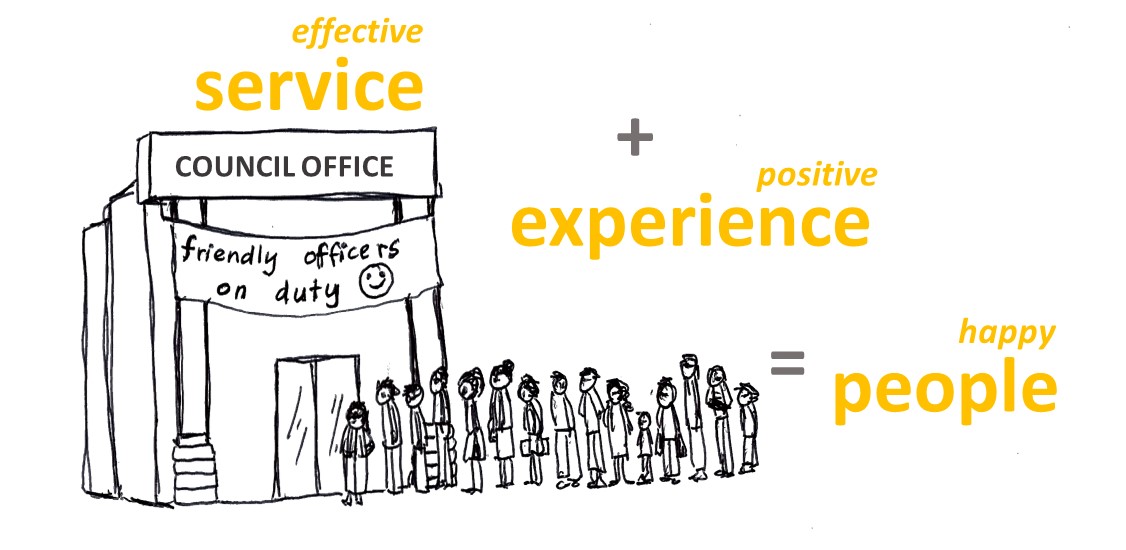In any part of the world, public service is defined by its highly standardised and rigid service structures, processes and hierarchies. People see the public services as highly bureaucratic while its employees, the public servants, see them as a set of strict process chains that they have to adhere to no matter what the case at hand appears to be. It becomes difficult for the public servants to be engaged in what people think when cost and time constraints continuously weigh down their efforts to improve their fronting. With hundreds of patients in hospital, thousands of children in schools and millions of applications and summons to be processed annually, the customer experience emphasis is cut off immediately after the very brief ‘greet with a smile’ procedure at the front counter.
The evolution of customer service standards across the public services, however is, but part of the natural progression of the society towards more complex, advanced and highly organised communities. Customer orientation in the public sector started gaining interest upon growth in the private sector where members of the general public started experiencing better and superior levels of services, enabling them to make comparisions between what they get from tax payments with what they get when they pay for a service directly. This marked the transition from the public being passive recipients of government services to informed consumers of government services.
During the same time, phenomenal growth in the economic sectors increased the number of transactions made between the public and the government offices. Every day, a few hundred thousand civil servants transact with millions of ‘customers’ at physical counters, online portals and on the ground - processing licenses, applications, complaints, payments, notifications, controlling traffic, treating patients, attending students and managing various operations and situations. With such figures, bottlenecks are sure to ensue with longer waiting lists, congestions and delays and many dissatisfied members of the public. This is where, without measures of quality and adequacy of the services rendered, areas with critical resource shortages will be left unattended. Customer experience indicators hence, play a crucial role in identifying these areas so that these shortcomings can be promptly addressed and service levels reinstated. In fact, over the medium and long term, overall delivery effectiveness and other performance elements like cost efficiencies can be measured only if the outputs and outcomes of the services delivered are captured and understood before future policies and programs are drawn up. Front end service experiences also have huge implications on government operational and development expenditures. The service experience data will influence the design of the backend systems and processes, thus influencing not only future infrastructure investments, but also operational models and delivery mechanisms that are employed across all public organisations.
Part of the government’s strategic response to exponential growth in its regulatory and enforcement machinery is to move to a 'self-regulating' environment which not only reduces the demand on its capacity, but also reduces the supervisory and enforcement costs as members of the public themselves act to supervise, record and inform on the situation on the ground. How does one garner public support and participation if there is no understanding or insight of what the ground level sentiment is on existing rules, regulations and processes? Periodic reports on overall customer satisfaction in the public sector allows the government to design and implement the policies and corresponding regulatory frameworks that the public is not only happy to abide by, but will participate in terms of its enforcement.
In addition, with Facebook, Youtube, the alternative media and other emerging communication platforms, people are able to compare and benchmark the levels of services provided by their public services with those of other organisations, municipalities, states and countries. A well informed society will demand equal levels of services, increasing the pressure on the government to deliver more competitive and efficient public services. Societies that believe in more regulation will see bigger governments and exponential growth in the number of mandatory transactions with government offices which along with other factors, will start influencing public sentiments on the government of the day. In the end, the day-to-day experiences of the public will be imputed into the decisions made in front of the ballot box, and that is one big reason why no democratically elected government can afford not to take customer experience seriously.
